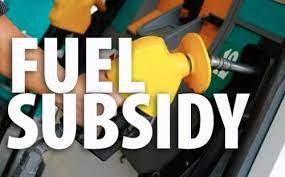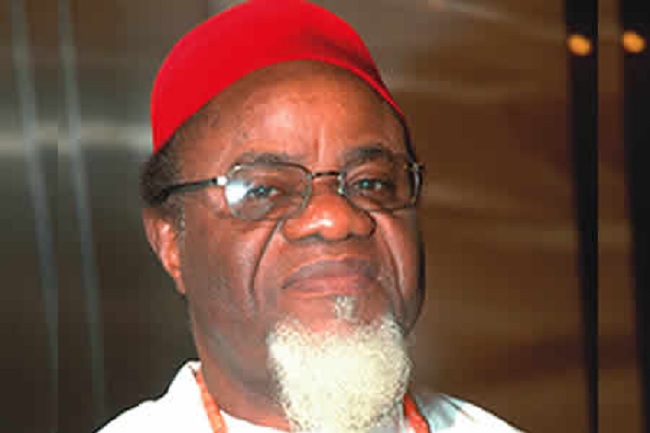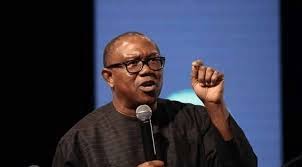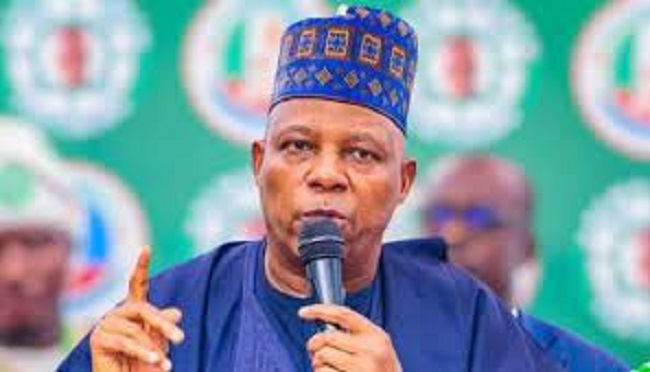Petroleum Subsidy Removal: The Short-Run Costs, Long-Run Payoffs and in- betweens.

Written by Iniobong Usen, Research and Policy Advisory Lead
“Petroleum Subsidy” has assumed a life of its own and is operating in dual capacity as the
Convener and the Chairman, Nigerian Governors Forum. Monthly, the 36 States of the
Federation assemble in Abuja to collect their “share”, i.e FAAC, of the “national cake”. In recent
times, however, the new Chairman of the Nigerian Governors Forum, “Petroleum Subsidy”,
takes the largest share of the national cake”, leaving crumbs for the remaining 36 States to
share. In fact, it not only leaves crumbs for the states but the federal government, as well, has
no respite from this new order that has seen the shrinking of its piece of the cake.
It will cost Nigeria, Africa’s second largest producer of crude oil, an estimated N4 trillion naira
to subsidise the price of petrol in 2022. To put this cost in proper context to examine the
magnitude of Nigeria’s subsidy cost, the cumulative budget size of the 36 States of the
Federation for 2022 is N9.65 trillion. The total revenue realised in 2020 by the Nigerian
National Petroleum Corporation (NNPC) Group, including all its subsidiaries, is N4.6 trillion.
Similarly, the federal government generated N3.9 trillion as revenue in 2020..
Petroleum Subsidy in itself isn’t a bad policy of the government, however, when a policy begins
to fail and negates its intended objectives, it requires a critical assessment. This is important
because the futures of government, security, health, education and development depend on it.
Whatever the final decision the assessment will lead to, will determine the fate and corporate
existence of the nation referred to as Nigeria in no small measure.
Historical Context of Nigeria’s subsidy program
Petroleum subsidy was introduced in Nigeria when the energy crises in the 1970’s drove the
price of crude oil per barrel from $3 to $12. 1 Sustenance of the petroleum subsidy program has
come at a huge cost to the Nigerian State. Nigeria’s petroleum subsidy cost has risen by
1,452% from N257.36 billion in 2006 to N4 trillion in 2022. According to the Petroleum
Products Pricing Regulatory Agency (PPPRA), it cost Nigeria a cumulative sum of N8.94
trillion to subsidise petrol between 2006 and 2015. Nigeria’s 2022 petroleum subsidy budget is
more than half what it cost the country to subsidise the product for 10 years.
In a study conducted by BudgIT, it was revealed that only 2 states, Lagos and Rivers, were able
to meet their operating expenses with revenues generated internally in 2020: 2 The 34 other
states had to significantly rely on federal transfers (which is made up primarily of oil revenue)
1 https://opendocs.ids.ac.uk/opendocs/bitstream/handle/20.500.12413/14989/ICTD_WP104.pdf?sequence=1&isAllowed=y
2 https://yourbudgit.com/wp-content/uploads/2021/09/State-of-States-report-2021-web.pdf
and Value Added Tax (VAT) to implement their budgets. In the first quarter of 2022, the NNPC
made zero remittance to federation accounts on the account of subsidy payments, leading to a
notable reduction in revenue available to be shared by different tiers of government. 3 Without a
doubt, Nigeria’s petroleum subsidy program in recent times has crowded out spending on
physical infrastructure and needed investments in critical social sectors like health, education,
water, sanitation and health (WASH) and social protection.
Why has Nigeria’s petroleum subsidy program failed?
The burden of petroleum subsidy has continued to weigh down heavily on the Nigerian State
owing to the highly volatile price of crude oil (with the attendant exchange rate differentials-
driven challenges) and because over time, Nigeria has refused to improve its capacity to refine
crude oil locally. Nigeria currently has 4 refineries—two in Port Harcourt, one in Warri and one in
Kaduna—with a combined installed capacity to refine 445,000 barrels of crude oil per day. 4
Nonetheless, the four refineries continue to incur annual operational costs without refining a
single barrel of crude oil per day. Worse still, the four refineries incurred a cumulative loss of
N486.54bn between 2016 and 2020. 5 In the same vein, licences issued to more than twenty
investors to engage in modular refining have not yielded the desired results due to pricing
regulations and pipeline vandalism.
Smuggling of PMS has been a major driver of the increase in Nigeria’s petroleum subsidy cost.
It is estimated that at least 15.6 million litres of PMS per day is smuggled across Nigeria’s
borders to its neighbouring countries. 6 There exists a major incentive for the smuggling of PMS
across Nigeria’s borders due to the major price disparity of PMS between Nigeria and its
neighbours. While PMS currently sells for 165/litre in Nigeria, it sells for between N577/litre and
N660/litre in the countries bordering Nigeria. 7 Nigeria’s reported daily consumption of PMS has
grown astronomically in the last 7 years with very little empirical evidence to back it up. Nigeria’s
average daily consumption has grown from 20.52million litres 8 in 2015, to to 40.74million
litres 9 in 2020, and 50.49million litres 10 in 2021. In the first 3 months of 2022, the country
recorded a daily average consumption of 64.14million litres. 11 Despite the fact that it will cost
Nigeria roughly N11bn daily to fund subsidy in 2022, very little has been done to establish an
intelligence-driven accountability mechanism to track the “apparent distribution” of PMS across
the federation and stem the smuggling of the product across Nigeria’s borders.
What will it cost Nigeria in the short run to remove petroleum subsidy?
There is no gainsaying that the removal of petroleum subsidy will significantly impact the lives of
Nigerians, 83 million of whom currently live in extreme poverty. The removal of petroleum
subsidy will in the short-run certainly have a multi-dimensional socio-economic impact on the
lives and livelihoods of Nigerians. With an estimated population of over 200million people and a
paltry power generation of about 4,000 megawatts, 12 Nigeria’s per capita energy consumption
of 144kWh 13 is below the sub-saharan average of 180kWh and the Europe average of 6,500
kWh. 14 Majority of Nigerians have to rely on petroleum-powered generators due to poor access
to electricity from the national grid to make up for the energy gap. Similarly, micro, small and
medium scale enterprises have to rely on petroleum-powered generators to run their operations,
resulting in a significant part of their operational cost being allocated to energy.
Furthermore, the major source of transportation for the majority of the populace, the bulk of
whom are poor, is petroleum-powered vehicles. There is a correlation between the pump price
of petrol and the price of basic commodities in the marketplace. 15 An increase in the price of
petrol often results in a corresponding increase in the price of basic commodities in the
marketplace. The World Bank has projected that the removal of subsidy will prompt an increase
in Nigeria’s inflation by 3 basis points (3%). It is certain that the removal subsidy will in the short-
run result in an increase in the price of goods and services, reduce the purchasing power of
Nigerians, and push more Nigerians further below the poverty line. However, the current
petroleum subsidy regime is unsustainable and will compromise Nigeria’s fiscal sustainability in
the short, medium and long term, cripple service delivery and in the long run push a lot more
Nigerians below the poverty line.
Wider Trust Deficit
The “jury’s verdict” on Nigeria’s petroleum subsidy program is that it needs to end. However, the
general perception is that savings from the removal of subsidy will not be utilized for pro-poor
programs and improved service delivery. So the real questions are: “why should the average
Nigerian pay more for a litre of petrol, if the resultant extra revenue that accrues to the
government will not be used for causes that improves his/her life? Will subsidy removal create a
fiscal space for improved spending in critical social sectors like health, education, WASH? Or
Will it create a fiscal space for more plundering Nigeria’s commonwealth? These are critical
questions that beg for cogent answers.
Expenditure patterns by the federal and subnational governments show that the country has
historically not efficiently and effectively used the windfall of oil revenues to bridge Nigeria’s
huge infrastructure deficit, improving universal health coverage and access to quality education
and electricity WASH and improving other human capital development indicators. For emphasis,
at the subnational level, state’s have prioritised spending on religious pilgrimages, airports,
international worship and conference centres, and many other capital-intensive white elephant
projects over investments in education, health, social protection, agriculture and (WASH). At the
federal level, the country’s annual budget seems to reflect the interests of the political elites and
bureaucrats rather than the developmental aspirations/objectives of the country articulated in
the National Development Plan. There are massive loopholes for corruption and expenditure
inefficiency with the situating of projects in the budgets of MDAs that have neither the mandate
nor the capacity to implement such projects and the inclusion of projects that should be the
clear mandate of the subnational governments.
Many believe corruption is the major bane of Nigeria’s weak revenue mobilisation profile.
According to the House of Representatives, Nigeria lost $7 billion to subsidy fraud perpetrated
by some oil marketers and their enablers within the civil service. Many of those indicted are yet
to be brought to book. The Inability of the government to hold people accountable and establish
strong deterrents for the commission of crime has encouraged more people to commit at
alarming rates.
Conclusion and Recommendation
Considering the current cost of petroleum subsidy to Nigeria, its removal is an imminent reality;
nevertheless, a couple of things need to be in place for the removal of subsidy to gain public
acceptance.
The government recently deployed $1.5 billion to rehabilitate the Port Harcourt Refinery.
Nigerians want to get value for money and see their refineries work, but this must be
accompanied by transparent, accountable and verifiable government operations that are carried
out with enough time for Civil Society to respond accordingly.
Secondly, through their budgets, the government projects and programs need to be geared
towards pro-poor causes and reflect the aspirations of Nigerians. These projects must be
conceptualised, implemented, completed and continuously evaluated with citizens' input. Every
stage must involve the input of citizen groups to provide the much-needed legitimacy that the
government seems to be sorely lacking. Thirdly, the attitude of the political class and
bureaucrats do not suggest to the average man that the country is broke and going through a
revenue crisis. A case in point is the immediate past junior Education Minister and the Labour
Minister purchasing presidential nomination forms for N100 million naira when Nigeria’s tertiary
education system h
bbas been shut down for 5 months. Though this would involve a systemic evaluation of the
norms of what is acceptable behaviour by politicians and bureaucrats, one thing is sure;
citizens' buy-in and trust in the government's decision to remove petrol subsidies must be met
with real behaviour change. In this way, the citizens-the government’s primary constituents
would provide the much-needed support for the transition away from the subsidy. In closing, it is
essential to state that the government at both the federal and subnational levels and political
elites cannot carry on with “Business as Usual” and expect Nigerians to accept “Business
Unusual” policies.







